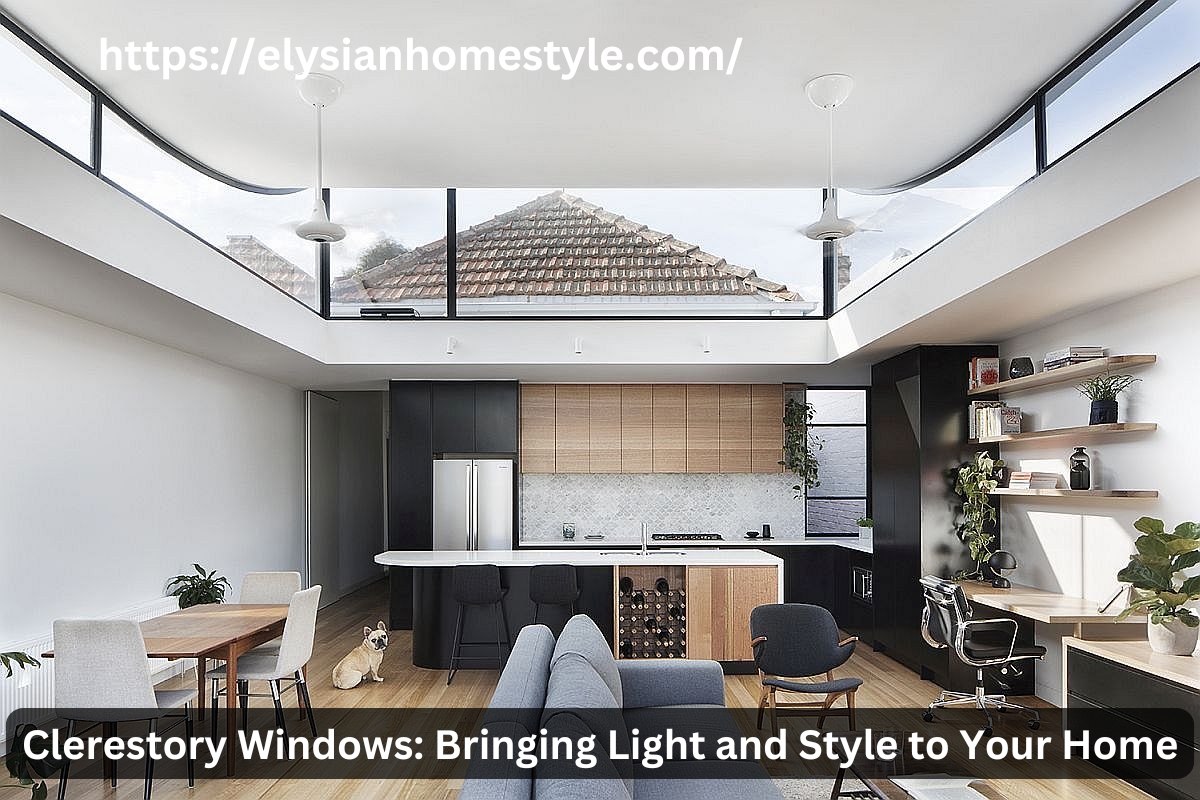Have you ever walked into a home and been struck by how light-filled and airy it feels? Chances are, clerestory windows had something to do with it. These high-set windows are a timeless architectural feature that brings abundant natural light while adding a unique aesthetic charm to any space.
Clerestory windows are installed above eye level, often near the roofline, making them a popular choice for homes and buildings where privacy, light, and ventilation are priorities. Their versatility in design and functionality makes them suitable for everything from modern open-plan homes to cozy, traditional interiors.
This guide will explore clerestory windows, their benefits, the best places to use them, and practical tips for integrating them into home design.
What Are Clerestory Windows?
Clerestory windows, pronounced “clear-story,” are defined as windows high on a wall, typically above standard windows or doors. They can span the full length of a wall or be limited to specific sections. Their main function is to bring in natural light and provide ventilation without compromising privacy.
These windows have a rich history, dating back to ancient Egypt, where they were used in temples to illuminate vast interiors. Gothic cathedrals, Roman basilicas, and even mid-century modern homes have embraced clerestory windows for their ability to brighten interiors and add an architectural statement.
Today, they are a popular design feature in homes worldwide, offering a perfect balance between functionality and style.
Benefits of Clerestory Windows
Why should you consider clerestory windows for your home? Here are their key benefits:
1. Amplify Natural Light
One primary reason homeowners love It is their ability to flood a room with natural light. Their high placement allows sunlight to pour in without glare, making spaces feel bright and welcoming.
This is especially useful in areas where privacy is important, such as bathrooms or bedrooms, as the elevated windows let in light without exposing the room to outside views.
2. Enhanced Ventilation
Opting for operable clerestory window can significantly improve airflow. Warm air naturally rises and escapes through these high windows, drawing in cooler air from lower windows or doors. This creates a natural ventilation cycle that keeps your home comfortable and reduces the need for air conditioning.
3. Energy Efficiency
By reducing your reliance on artificial lighting and promoting natural cooling, clerestory windows can help lower energy bills. Combined with energy-efficient glazing, these windows can prevent heat gain in summer and retain warmth in winter, making them a sustainable choice for modern homes.
4. Architectural Elegance
Clerestory window add a unique design element to any space. They create the illusion of taller ceilings, add visual interest to walls, and draw attention to architectural details like exposed beams or vaulted ceilings.
Whether your home is sleek and modern or warm and rustic, clerestory windows can elevate its overall aesthetic.
5. Versatility Across Spaces
These windows work well in a variety of rooms and architectural styles. They can brighten living areas, define zones in open-concept layouts, or bring light to areas with limited wall space, such as kitchens or staircases.
Ideal Places to Use Clerestory Windows
Where can clerestory windows have the biggest impact on your home? Let’s explore some common spaces where they truly shine:
1. Living Rooms
Clerical windows add light to living rooms while maintaining wall space for artwork, shelving, or furniture. They’re often used in homes with vaulted ceilings to create a dramatic and airy effect.
2. Kitchens
Kitchen walls are often reserved for cabinets, appliances, or backsplashes. Clerestory window solve this problem by bringing in light without wasting valuable wall space. They make kitchens feel brighter and more functional.
3. Bathrooms
Privacy is essential in bathrooms, but natural light can make these spaces feel larger and more inviting. High-set clerestory windows allow you to maintain privacy while brightening the space with daylight.
4. Bedrooms
Clerestory windows bring in soft, filtered light in bedrooms while ensuring the room remains private and cozy. They’re a great option for homes with vaulted ceilings or minimalist designs.
5. Hallways and Staircases
Hallways and staircases often lack natural light, making them feel dark and cramped. Clerestory windows can transform these areas, making them more open, bright, and visually appealing.
Design Tips for Clerestory Windows
Integrating clerestory windows into your home requires careful planning. Here are some expert tips to ensure they work seamlessly with your design:
1. Focus on Placement
Position clerestory windows strategically to maximize light. South-facing walls (in the northern hemisphere) capture sunlight throughout the day. East-facing clerestory window work well for morning light, while west-facing ones are better for evening light.
2. Pair Them with Other Windows
Clerestory windows can complement larger windows or sliding glass doors beautifully. This combination allows light to flow freely while creating a balanced design.
3. Choose the Right Materials
Opt for energy-efficient materials like double- or triple-glazed glass to minimize heat transfer. High-quality wood, aluminum, or vinyl ames will ensure durability and complement your home’s style.
4. Add Shading Features
To prevent overheating during summer, incorporate shading solutions like overhangs, louvers, or UV-blocking films. These features help regulate indoor temperatures without compromising natural light.
5. Highlight Architectural Elements
Use clerestory windows to highlight key architectural details, such as exposed beams, vaulted ceilings, or unique rooflines. They can act as both a functional and decorative element.
Frequently Asked Questions
Q: Are clerestory windows suitable for small homes?
Yes! Clerestory windows are perfect for small spaces. They bring in light without occupying floor or wall space, making rooms feel larger and more open.
Q: Do clerestory windows increase energy costs?
When insClerestory can lower energy costs by reducing.
Q: Are they difficult to maintain?
Since they’re positioned high on walls, cleaning clerestory window may require a ladder or professional help. However, their minimalistic design makes them easier to maintain than larger, floor-to-ceiling windows.
Conclusion
Clerestory windows are more than just a design feature—they’re a practical way to improve your home’s lighting, ventilation, and overall ambiance. Whether building a new home or renovating an existing space, these high-set windows offer a timeless solution that combines form and function.
Ready to brighten your space with clerestory windows? Consult an architect or window specialist to explore how this stunning feature can be tailored to your home’s unique design.

